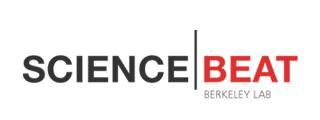

| January 9, 2004 | science beat | | lab a-z index | lab home |
 |
 |
||
|
|||
| TEAM: Beaming Toward the Bottom | ||||||||||||||||||||
| Contact: Paul Preuss, paul_preuss@lbl.gov | ||||||||||||||||||||
| In his famous 1959 lecture, "There's Plenty of Room at the Bottom," Richard Feynman broached the startling notion that the electron microscope could be improved a hundred times over the 10-angstrom resolution then possible. Since a fraction of an angstrom is much less than the radius of an atom, "it should be possible to see the individual atoms," Feynman suggested; he meant each atom in a 3-D arrangement of atoms.
More than forty years later TEAM, the Transmission Electron Aberration-corrected Microscope, is poised to meet Feynman's challenge. Led by NCEM director Uli Dahmen, five facilities supported by DOE's Office of Basic Energy Sciences—at Argonne, Brookhaven, Oak Ridge, and Lawrence Berkeley National Laboratories, and at the University of Illinois—are collaborating to build the first TEAM microscope at NCEM, where the historic High-Voltage Electron Microscope has been dismantled to make room for the new machine. Electron microscopists have long recognized three ways of improving resolution: high voltage, image reconstruction, and aberration correction. With other improvements, it was high voltage that allowed NCEM's Atomic Resolution Microscope to break the 2-angstrom barrier in 1983, making columns of atoms visible in crystalline structures; it was image reconstruction that allowed NCEM's One Ångstrom Microscope to break the 1-angstrom barrier in the 1990s, making columns of light atoms visible even in the presence of their heavy neighbors. Aberration correction is the final stage of the push to achieve atomic resolution in 3-D. Atoms will be seen not only as the tops of columns in a crystal lattice but as individually positioned in space—even in glass, which has no crystal structure. Aberrations occur because electron beams spread from the center of the lens or focus at different depths at different electron energies. With optics made of electric and magnetic fields (not glass), correcting aberrations has only recently become feasible. TEAM's 0.5-angstrom resolution will mean tighter, brighter beams that penetrate materials more deeply, yielding a stronger signal, higher contrast, and greater sensitivity. TEAM can use thicker samples than the ultrathin foils needed for image reconstruction; there will be more space for samples even than in high-voltage machines.
More space means samples can be manipulated inside the microscope and observed in real time: tilted, heated, bent, dented, bathed in chemicals or electric and magnetic fields. TEAM will be able to examine the properties of structures and defects in 3-D and locate individual dopant atoms in semiconductors. Used for lithography, TEAM's electron beam can build nanostructures atom by atom. Moving ahead on schedule, within five years TEAM's new optics will make Feynman's vision a reality. Additional information
|
||||||||||||||||||||
| Top | ||||||||||||||||||||